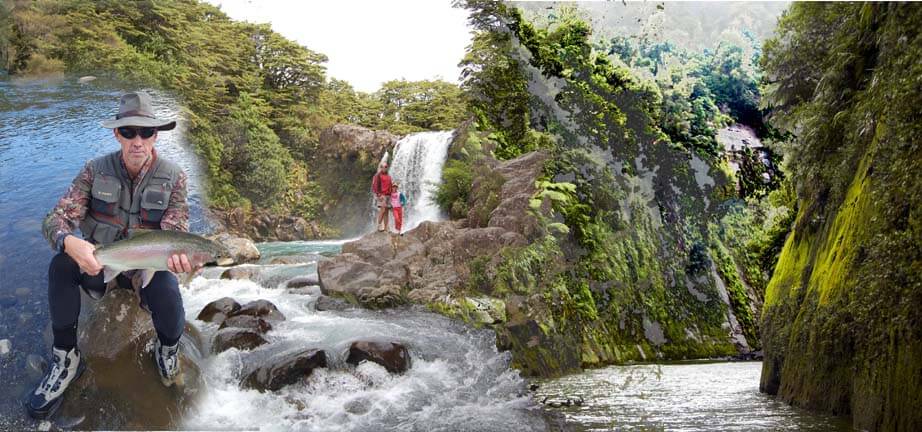Main Rivers
The Whanganui River
With a length of 290 kilometres (180 mi), the Whanganui is the country’s third-longest river. Much of the land to either side of the river’s upper reaches is part of the Whanganui National Park, though the river itself is not part of the park.
The river rises on the northern slopes of Mount Tongariro, one of the three active volcanoes of the central plateau, close to Lake Rotoaira. It flows to the north-west before turning south-west at Taumarunui. At that point it is joined by the Ongarue River. From here it runs through the rough, bush-clad hill country of the King Country before turning south-east and flowing past the small settlements of Pipiriki and Jerusalem, before reaching the coast at Whanganui. It is the country’s longest navigable river. The Whanganui River provides a whole range of experiences to the visitor. You can tramp or walk, jet boat, kayak, canoe, cycle and sightsee. For further information about the Whanganui River see
The Whakapapa River
The Whakapapa River in New Zealand trickles off the Whakapapa skifield of Mount Ruapehu, down the western slopes of the mountain through Owhango before finally merging with the Whanganui River just east of Kakahi.
The Whakapapa River is the largest tributary of the Whanganui River and flows through native forest alternating between turbulent rapids, deep pools and long boulder runs. Typical of mountain streams the waters are cool, clear, fresh and crystal clear. For more information about the Whakapapa River see
The Ongarue River
As previously mentioned, the Ongarue River is a major tributary of the Whanganui River, it flows west then south from its sources in the Hauhungaroa Range northwest of Lake Taupo, passing through the town of Taumarunui before reaching the Whanganui River. Normally the Ongarue is a quiet river the view of which enhances journeys by road and rail.
Tributaries of the Ongarue include the Maramataha River and the Taringamotu River.
The upper and middle reaches of the Ongarue River provide excellent fly fishing waters. It’s clear waters run over a gravel and stone bed, with bankside vegetation providing great trout habitation. The river is small in size allowing easy movement up and downstream.
Tributaries, streams and minor rivers
There are a number of tributaries, streams and minor rivers in the Ruapehu Region. It all depends on your interests. In a number of cases access is over private land and the consent of the land owner is required for which we may well be able to assist you.

